Verona Arena: a timeless stage of history and spectacle
Verona Arena: the tickets most chosen by travelers
The Verona Arena: two thousand years of magic and entertainment
An unmistakable symbol of the city of Verona and one of the most iconic monuments in Veneto and all of Italy, the Verona Arena represents a unique blend of Roman architectural grandeur and the timeless allure of performance.
Built probably around the 1st century AD (but there are no strong certainties regarding this), the Arena was conceived as an amphitheater designed to host epic gladiator battles and other spectacular events that were a daily part of ancient Rome. With a capacity of up to 30,000 spectators, it was one of the most imposing structures of the Roman Empire.
However, its history is not just that of an entertainment venue, but of a monument that has evolved over the centuries, maintaining its spirit of grandeur. Its dimensions, elegant lines, and spectacular arches were a masterpiece both aesthetically and functionally, as evidenced by the excellent visibility from every corner of the amphitheater, and the extraordinary acoustics that still amaze visitors today, offering a unique sensory experience.
Over the centuries, the Verona Arena has withstood natural challenges and urban transformations, preserving its strength and charm. From a symbol of entertainment in Roman times, it has become a true cultural beacon; still today, after two thousand years, it remains a vibrant stage that hosts artists and attracts spectators from all over the world.
Its seating accommodates concerts, operas, and performances of all kinds, such as the famous Opera Festival, which every summer since 1936 has offered immortal works like Aida, Carmen, and Tosca. Because attending a performance at the Verona Arena is a magical and evocative experience, capable of surprising and creating a deep connection between the audience and the millennia-old history of Verona.
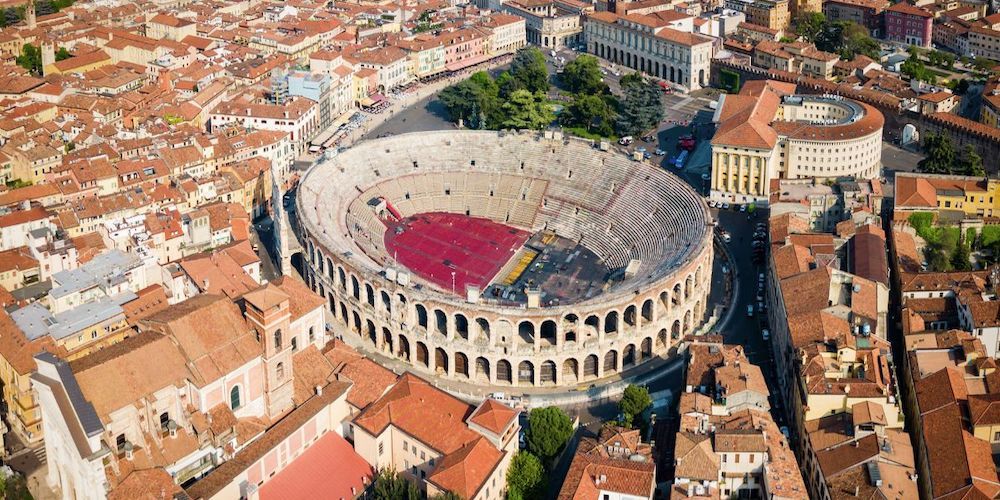
Useful information for visiting the Verona Arena
Opening Hours - the Verona Arena is open for visits throughout the year:
- from October to May: Tuesday to Sunday from 9:00 AM to 7:00 PM (last entrance at 6:30 PM).
- from June to September: Monday from 9:00 AM to 7:00 PM, and from Tuesday to Sunday until 5:00 PM due to scheduled performances (last entrance at 4:30 PM).
Keep in mind that opening hours may vary on public holidays and during special events or evening shows.
Accessibility - the Arena's historic structure presents some accessibility challenges. Due to its ancient Roman architecture, there are uneven surfaces, narrow stairs, and steep steps, making some areas difficult for visitors with reduced mobility. However, accommodations are available for those with specific needs, including designated entrances for wheelchair users.
Booking - to avoid queues and ensure a smoother experience, booking tickets online in advance is highly recommended, especially during holidays or high tourist seasons. Standard entry tickets are available, but for a deeper understanding of the Arena's fascinating history, consider opting for a guided tour, which provides more interesting and detailed historical narratives.
Last-Minute Tickets - if you haven't booked in advance, tickets can still be purchased directly at the entrance or through official online channels. However, be prepared for potential waiting times during peak tourist periods or on performance days.
Verona Arena: tips for your visit
How to get to the Verona Arena
Getting to the Verona Arena is easy and convenient, especially if you arrive by train. The Verona Porta Nuova train station is just a 20-minute walk from the Arena. Once you exit the station, simply follow the signs to the city center, continuing along the wide, tree-lined Corso Porta Nuova, which will take you directly to Piazza Bra, where the Arena is located.
If you prefer to use public transport, there are several buses (such as 11, 12, or 52) that frequently depart from the station and will take you to Piazza Bra in just a few minutes.
Alternatively, if you arrive by plane, Verona Villafranca Valerio Catullo Airport is about 12 km from the city center. From the airport, you can take a shuttle bus that will take you to the Verona Porta Nuova train station in about 15 minutes.
For those traveling by car, the old town of Verona is a limited traffic zone (ZTL). However, there are many convenient parking options just outside the historic center, within walking distance from Piazza Bra.
The best experiences in
Best attractions around Verona Arena
all entrance tickets for the most popular Italian attractions
Doge Palace
VeniceVenice Gondola Rides
VeniceSt. Mark's Basilica
VeniceJuliet's House
VenetoVivaldi Concert Venice
VeniceGondola Ride
VenicePeggy Guggenheim Collection
VeniceVerona: 10 things to do like a local
Do you want to visit Verona like a local? Discover the 10 things to do to experience the city like a true Veronese.
Read more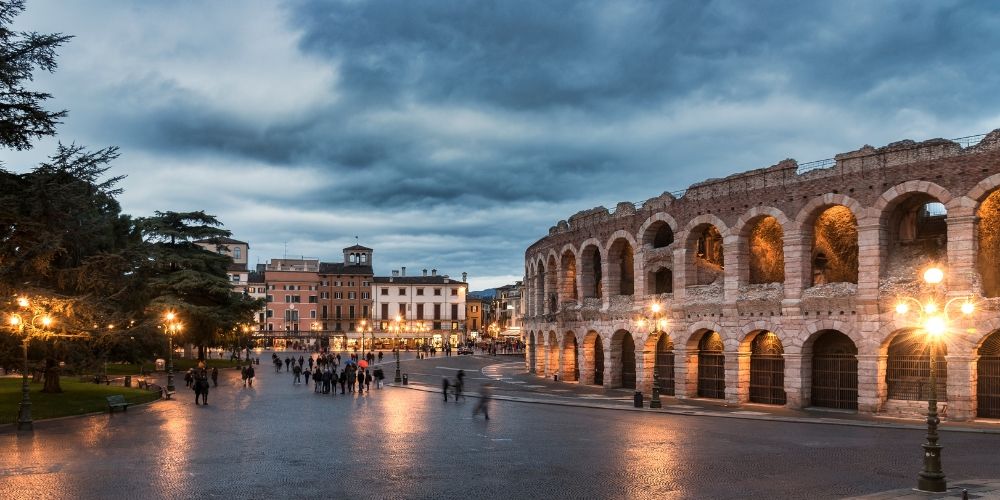
FAQ about the Verona Arena
1. Can I visit the Verona Arena?
Absolutely! The Arena is open to visitors throughout the year, with specific opening hours depending on the season. Whether you're interested in exploring its ancient architecture, learning about its fascinating history, or attending a breathtaking opera performance, it's a must-see landmark in Verona.
2. How long to spend at the Verona Arena?
A visit typically takes between 30 minutes to an hour, depending on your level of interest. Guided tours often last longer, offering deeper insights into the Arena's history and architecture, making it a truly enriching experience.
3. Why is the Verona Arena famous?
The Arena is renowned for its remarkable preservation and as one of the most iconic Roman amphitheaters still in use today. It hosts spectacular performances, concerts, and events, continuing a tradition of entertainment that dates almost 2,000 years.
4. What is performed at the Verona Arena?
The Arena is best known for its open-air opera performances, particularly during the summer opera festival. You can also enjoy concerts and other live events that make the most of the Arena's stunning acoustics and historic ambiance.
5. Is the Verona Arena older than the Colosseum?
Yes, the Verona Arena predates the Colosseum by a few decades, even if the exact construction date remains uncertain due to a lack of definitive historical records. However, it's generally believed to have been built in the early 1st century AD, during the Julio-Claudian dynasty, while the Colosseum in Rome was constructed later, with work commencing under Emperor Vespasian around 70 AD and completed by his son, Titus, in 80 AD.
6. Did gladiators fight in the Verona Arena?
Like other Roman amphitheaters, the Verona Arena was originally used for gladiator battles and other public spectacles, providing thrilling entertainment for the ancient Roman audience.
7. How many people fit in the Verona Arena?
Originally, the Arena of Verona could accommodate up to 30,000 spectators, an impressive capacity that testified to its importance in ancient Rome as a venue for grand public events. Today, although the seating has been reduced to around 22,000, the experience remains extraordinary, thanks to its perfect acoustics and magnificent architecture.
8. How much does a ticket for the Verona Arena cost?
An adult ticket for the Verona Arena costs 10 euros. Discounts are available for visitors over 60, groups, students, and children aged 8 to 14. Admission is free for residents over 65, people with disabilities, and children up to 7 years old. Guided tours, especially those that include visits to other sites in Verona, may cost more, as does a ticket to attend an opera performance inside the Arena.
The best tours to visit the Verona Arena
The Verona Arena is one of the best-preserved Roman amphitheaters in the world and one of the most fascinating places in the city.
Located in the beautiful Piazza Bra, in the heart of Verona, it offers visitors a unique opportunity to immerse themselves in the history and culture of ancient Rome, thanks to its impressive architecture and exceptional acoustics.
The Arena is open from Tuesday to Sunday (09:00-19:00) from October to May, while in the summer months it can be visited every day (09:00-19:00 on Mondays, 09:00-17:00 on the other days). The "basic" entrance costs 10 Euros, but the best way to explore this extraordinary monument is through a guided tour, so you can discover in-depth the many secrets of its millennia-old history.
So, what are the best tours to visit the Verona Arena?
1. Verona Card with Arena Priority Entrance - the Verona Card gives you priority access to the Arena and many other museums and monuments in the city, helping you avoid long lines on weekends and holidays. You will also enjoy unlimited public transport, discounts, and a digital guide to explore Verona.
2. Verona Arena: Fast Track Ticket - with this tour, you can skip the line and access the Arena quickly, where an authorized guide will take you through its history and legends. During the tour, you will visit the interior of the Arena and hear fascinating stories about gladiators and the spectacles held within its walls.
3. Verona Opera Arena: Opera Ticket and City Walking tour - an unforgettable experience with a ticket for an extraordinary opera performance. Enjoy the magic of opera in one of the most captivating Roman amphitheaters in the world, joining a guided tour of Verona’s most charming spots before the event.
4. The Gladiators’ Verona Arena with a Guide - a special tour that will explore both the interior and exterior of the monument, revealing the fascinating details about its construction, the organization of gladiatorial combats, and the events that shaped its history.
5. Verona City Tour - in addition to visiting the Arena, this two-hour guided walking tour will take you to discover other wonders of the old town. Admire Juliet’s balcony, stroll through the extraordinary squares and medieval alleys, and uncover every detail of Verona's history.
The history of the Verona Arena: from gladiators to opera
The Verona Arena, one of the most iconic and well-preserved monuments of Imperial Rome, does not have a definite birthdate, but its construction is commonly attributed to the 1st century AD.
This magnificent amphitheater, originally capable of hosting up to 30,000 spectators, was intended for public spectacles, such as gladiator games, wild animal fights, and naval battles. It was one of the most important venues for socializing and entertainment in Roman Verona.
Over the centuries, Verona Arena unfortunately suffered numerous damages: the first catastrophic event occurred in the 12th century, when a devastating earthquake struck the city, destroying much of the amphitheater and causing the collapse of a significant portion of the tiered structure.
The Middle Ages marked a period of decline. The amphitheater was neglected, hosting only minor events and even being used as a sort of stone quarry for the construction of new buildings.
An important turning point came in the 18th century, with the emergence of the modern use of the amphitheater for artistic performances. During this time, Verona began to reassess its historical heritage, and Verona Arena was gradually restored. By the 19th century, its grandeur began to shine again.
In 1913, it hosted its first opera performance, Verdi's Aida, marking the beginning of its long tradition as an opera theater. This event led to a series of performances that would establish Verona Arena as one of the world’s most prestigious stages for opera.
After the major restoration in the mid-20th century, Verona Arena became one of the most prestigious venues for opera in the world, retaining its charm as a symbol of Verona's history. Today, this wonderful monument continues to host the renowned Opera Festival and attracts millions of visitors, keeping alive the memory of a past rich in history, culture, and spectacle.
Curiosities about the Verona Arena
Which music celebrities have performed at the Verona Arena? - Over the past decades, the Verona Arena has hosted numerous world-renowned artists, becoming a prestigious stage for talents from all over the globe. Among the stars who have graced its historic stage are legendary tenors Luciano Pavarotti, Placido Domingo, and José Carreras, who helped make the Arena a symbol of international opera. But pop and rock artists have also performed at the Arena: Andrea Bocelli, Elton John, Sting, Paul McCartney, and Whitney Houston. Additionally, bands such as Dire Straits, Radiohead, The Who, Deep Purple, and many others have enchanted audiences with unforgettable concerts under Verona's starry sky.
The secrets of perfect acoustics - The Verona Arena is renowned for its extraordinary acoustics. Although its shape and size may seem unsuitable for a high-quality musical performance, the materials used in its construction and the amphitheater’s design allow for a natural resonance that has made it a paradise for opera singers.
The extraordinary charm of the Opera Festival - The annual Opera Festival held every summer at the Verona Arena is one of the largest and most prestigious events in the world: it attracts tens of thousands of spectators, making the Arena one of the venues with the highest seating capacity for opera performances. In some editions, record numbers have been reached, with over 20,000 people attending a single show.
The mystery of the Arena's pavement - Although the Verona Arena is famous for its grandeur and beauty, the original pavement of the amphitheater has been lost over time. The pavement we see today has been reconstructed, but the original, which was once made of marble slabs, was destroyed during the various historical upheavals, including the devastating earthquake that hit Verona in 1117.






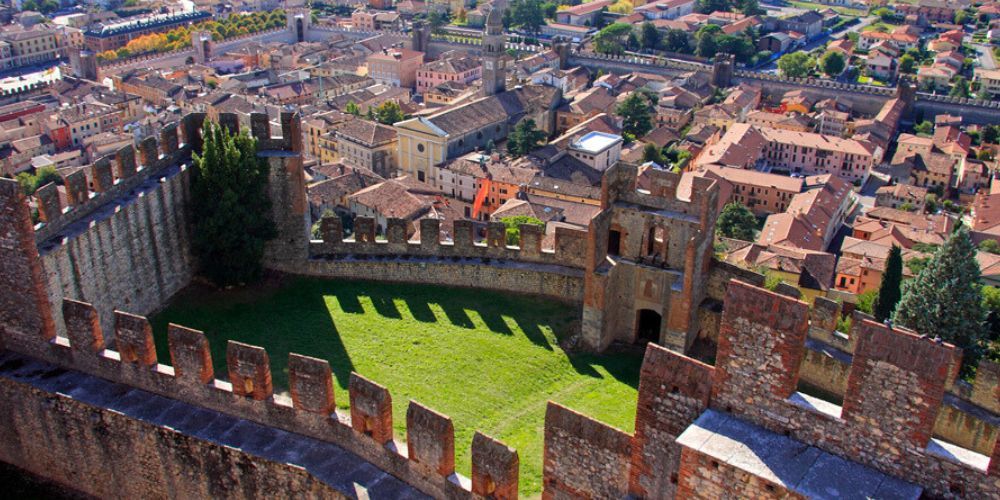
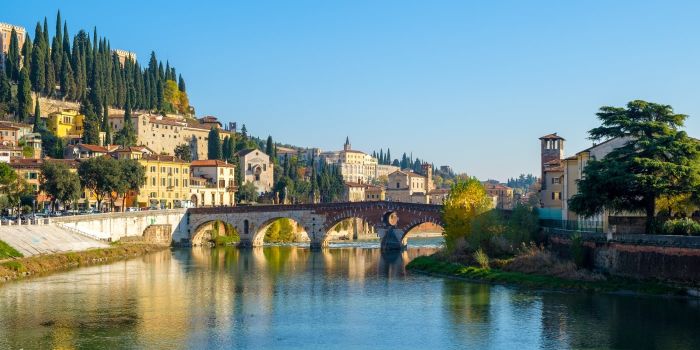
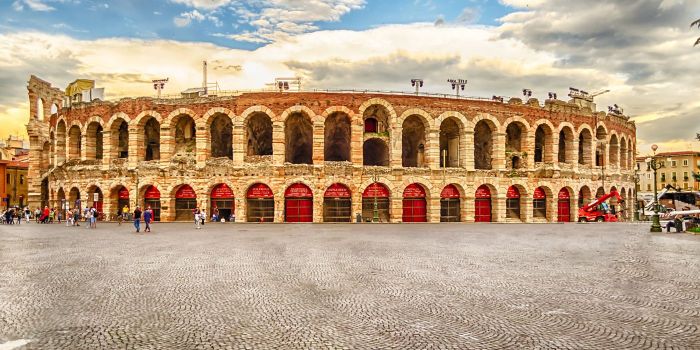


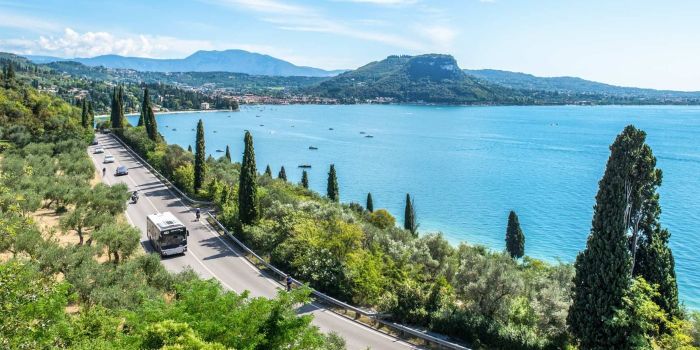
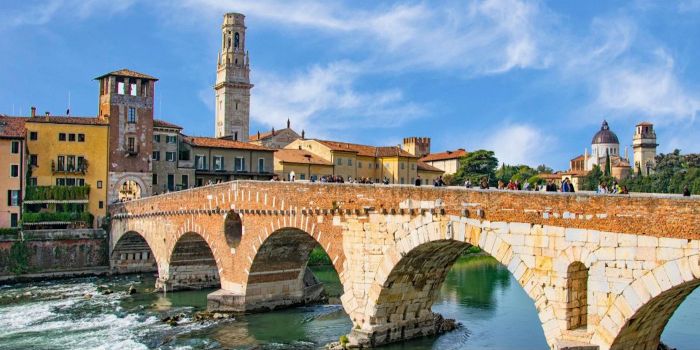
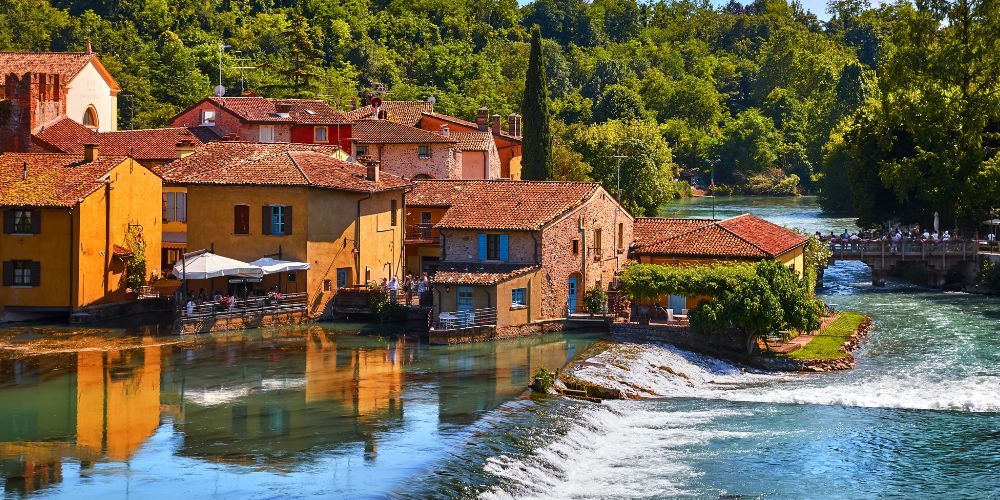







Alessandro Savino
Discover everything you need to know about visiting the Verona Arena, the Roman amphitheater symbol of the Scaliger city. From opera performances to concerts and guided tours, this extraordinary monument offers a unique experience immersed in the timeless charm of Verona.